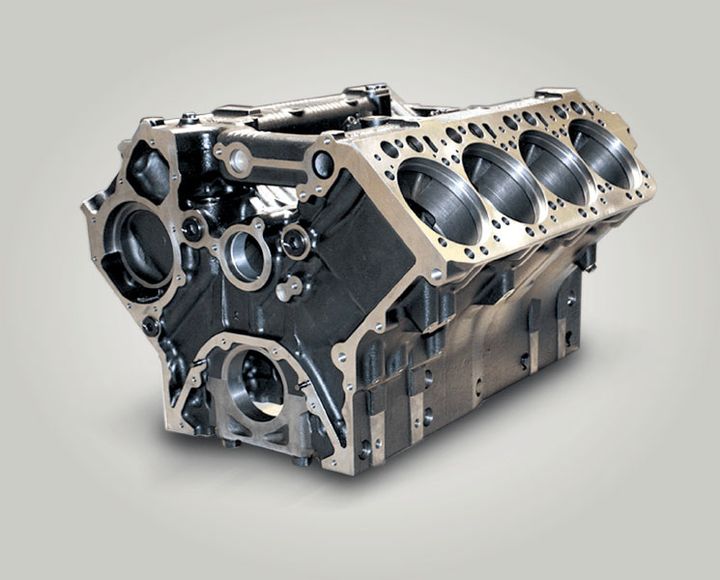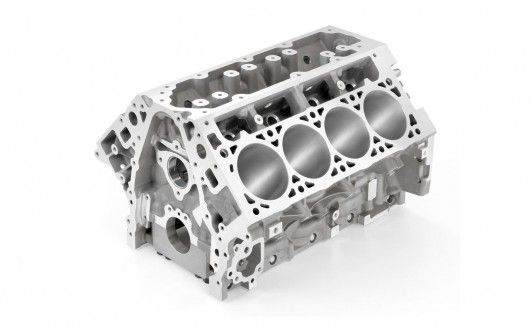


The internal combustion engine is a remarkable invention that has revolutionized transportation and industry. It is a complex machine that converts the chemical energy stored in fuel into mechanical energy through a series of controlled explosions or combustion events. The engine is the heart of any vehicle, providing the necessary power to propel it forward.

The engine block is the backbone of your vehicle's power plant. It's a sturdy metal casting, typically made of cast iron or aluminum alloy, designed to withstand immense pressures and temperatures. Within its intricate structure, the block houses the cylinders where the combustion process takes place, as well as the crankshaft, pistons, and other vital components.
Think of the engine block as the foundation upon which the entire engine is built. It's a critical component that ensures the smooth operation of the engine's moving parts and facilitates the transfer of power to the drivetrain.
Despite its robust construction, engine blocks are not immune to wear and tear or potential damage. Over the years, I've encountered various issues that can compromise the integrity of this essential component. Here are some of the most common causes and problems:
| Cause | Description |
|---|---|
| Overheating | Excessive engine heat can weaken the block, leading to cracks. This can be caused by coolant loss, faulty cooling system components (radiator, water pump, thermostat), or inadequate maintenance. |
| Poor Maintenance | Neglecting regular coolant changes, oil changes, or overall engine maintenance can accelerate block deterioration and increase the risk of cracking or other damage. |
| Engine Stress | High-performance engines, older engines, or engines subjected to excessive stress (e.g., towing, racing) may be more prone to cracking due to increased internal pressures and temperatures. |
| Casting Defects | Rare but possible, casting flaws during the manufacturing process can create thin or weak areas in the block, making it susceptible to cracking over time. |
When an engine block issue is suspected, a thorough inspection and diagnosis are crucial. Here are some steps I typically follow:
Visual inspection for cracks, scoring, corrosion, or other damage on the block's exterior and cylinder bores.
Check for coolant or oil leaks, which can indicate cracks or damage.
Perform a cylinder leak-down test to check for air leaks, indicating potential cracks in the cylinders or block.
Use a precision straightedge and feeler gauges to measure deck warpage or cylinder bore wear.
Coolant or oil leaks, especially around the block or cylinder head gasket area.
White smoke from the exhaust, indicating coolant burning in the cylinders.
Overheating or loss of coolant without an apparent cause.
Knocking or unusual noises from the engine.
Low compression or compression variations between cylinders.
Depending on the severity of the damage, there are various repair options available for engine blocks:
| Repair Option | Description |
|---|---|
| Minor Cracks | For minor cracks, welding, cold metal stitching, or using specialized epoxy repair kits may be viable solutions. However, these are often temporary fixes, and the block may eventually need to be replaced. |
| Severe Damage | In cases of severe cracks or extensive damage, block replacement or complete engine replacement is typically recommended. This process involves disassembling the engine, pressure testing, machining or resurfacing the block, and replacing gaskets, seals, and other components. |
Proper cleaning and preparation of the block surface are crucial for successful repairs. Additionally, following the manufacturer's specifications and torque values during reassembly is essential to ensure the engine's longevity and performance.
While engine block issues can sometimes be unavoidable, there are several preventive measures you can take to minimize the risk of future problems:

Regular maintenance, including coolant flushes, oil changes, and inspections as per the manufacturer's recommendations.
Avoid overheating by addressing cooling system issues promptly and ensuring proper coolant levels.
Operate the engine within its designed limits and avoid excessive stress or high-performance modifications without proper upgrades.
Use recommended coolant and oil types, and follow the manufacturer's guidelines for operating conditions.
The cost of repairing or replacing an engine block can vary significantly depending on the extent of damage, the make and model of the vehicle, and labor costs. Here are some general estimates:
| Repair/Replacement | Cost Range |
|---|---|
| Engine Block Repair (welding, stitching, or epoxy) | $1,500 - $3,500 for parts and labor |
| Engine Rebuild (replacing internal components) | $2,500 - $4,500 for parts and labor |
| Engine Replacement (new or remanufactured) | $3,000 - $8,000 or more, including labor |
It's important to consider the overall condition of the vehicle and its value when deciding whether to repair or replace the engine block. In some cases, selling the vehicle as-is may be a more cost-effective option if the repair costs exceed the vehicle's worth.
The engine block is the foundation upon which your vehicle's power plant is built. Maintaining its integrity is crucial for ensuring reliable and efficient performance. By understanding the common causes of engine block issues, recognizing the signs of damage, and following proper maintenance and repair procedures, you can extend the life of your engine and avoid costly breakdowns.
As a mechanic, I've witnessed firsthand the importance of taking care of this vital component. By sharing my knowledge and experience, I hope to empower you with the information needed to make informed decisions about your vehicle's engine block and keep your ride running smoothly for years to come.
Engine blocks are commonly made from cast iron or aluminum alloy. Cast iron is heavier but more durable, while aluminum is lighter but less resistant to extreme temperatures.
The engine block houses the cylinders where the combustion of air and fuel takes place. It also contains the crankshaft and other components that convert the combustion energy into rotational motion.
Common signs include coolant or oil leaks, white smoke from the exhaust, overheating, knocking noises, and low or uneven compression across cylinders.
Minor cracks can sometimes be repaired through welding, cold metal stitching, or epoxy kits, but these are often temporary fixes. Severe damage usually requires block replacement or a complete engine rebuild.
Regular maintenance, avoiding overheating, operating within designed limits, and using recommended fluids can help prevent engine block problems.
Repair costs can range from $1,500 to $3,500 for welding, stitching, or epoxy repairs, including labor.
Replacing an engine block through a rebuild can cost $2,500 to $4,500, while a complete engine replacement can range from $3,000 to $8,000 or more, including labor.
The engine block houses the crankshaft, which converts the reciprocating motion of the pistons into rotational motion that is then transferred to the drivetrain.
The cylinder bores are the spaces within the engine block where the pistons move up and down, facilitating the combustion process.
Proper cleaning and preparation of the block surface are crucial for successful repairs, as any contaminants or imperfections can compromise the integrity of the repair.

Sarah isn't your average gearhead. With a double major in Mechanical Engineering and Automotive Technology, she dived straight into the world of car repair. After 15 years of turning wrenches at dealerships and independent shops, Sarah joined MICDOT to share her expertise and passion for making cars run like new. Her in-depth knowledge and knack for explaining complex issues in simple terms make her a valuable asset to our team.











